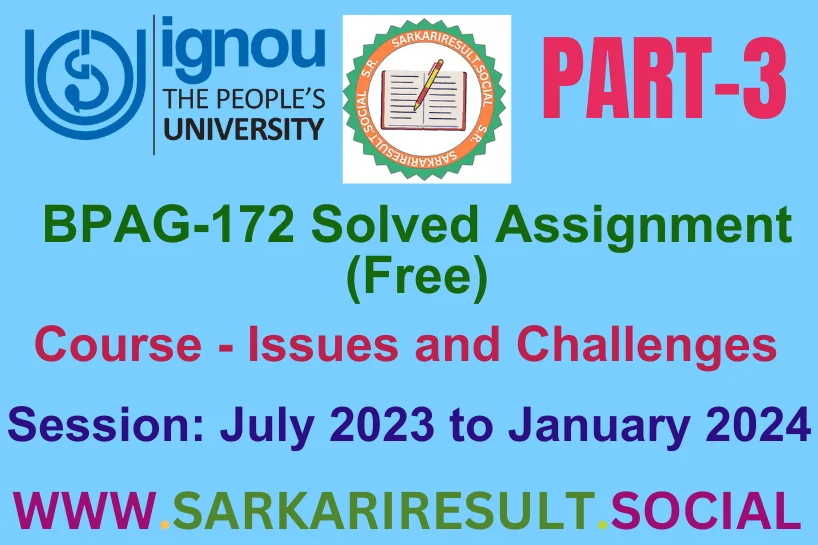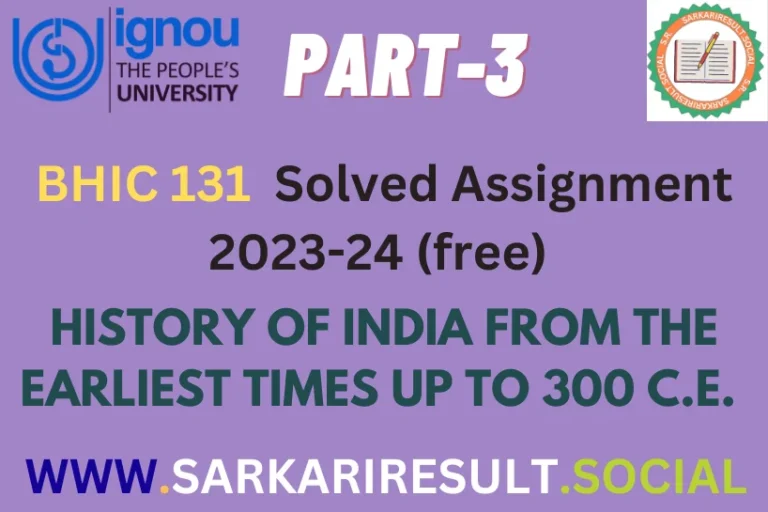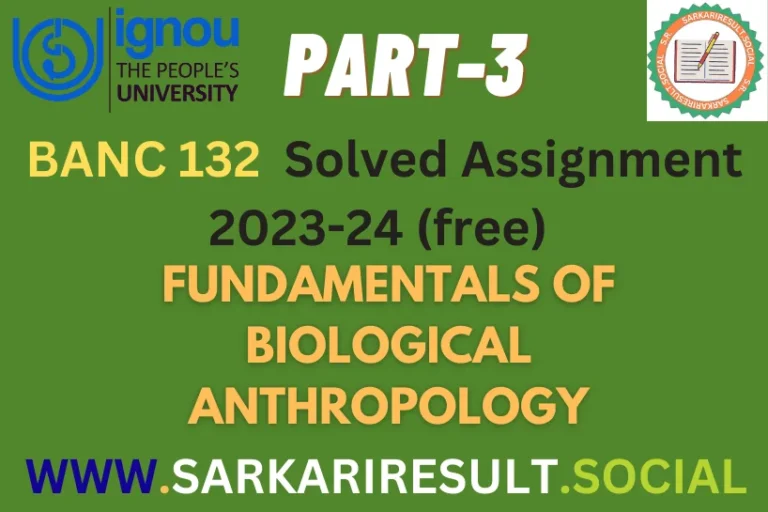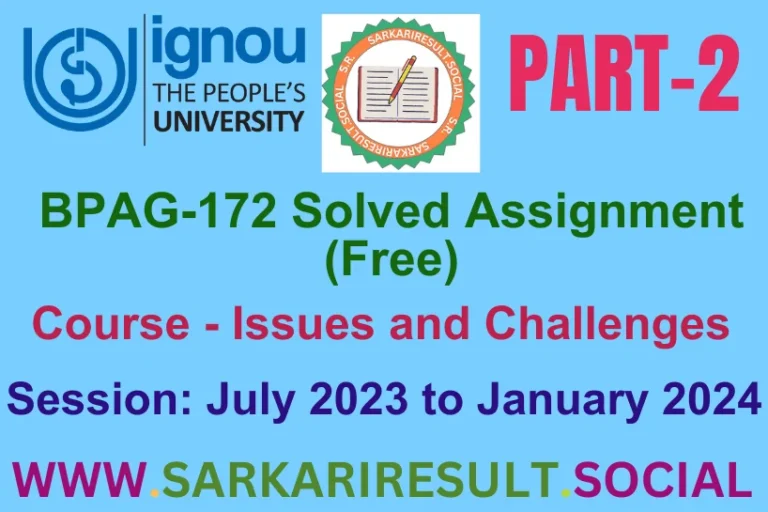BPAG 172 SOLVED IGNOU ASSIGNMENT FREE PART 3

Welcome to the BPAG 172 SOLVED IGNOU ASSIGNMENT FREE PART 3 TMA. Assignment C simplifies your approach with concise answers to five questions. In just 100 words per response, explore the various perspectives of globalization, understand the phases in ICT-enabled governance, describe models of corporate governance, explain the triple bottom line (TBL) approach, and define the concept of citizen’s charter.

Answer the following questions in about 100 words each.
Q.6 Discuss the various perspectives of globalisation.
Ans. Globalization is viewed through various lenses:
1. Economic Perspective: Emphasizes interconnected markets, trade, and capital flow, promoting economic growth.
2. Cultural Perspective: Focuses on the exchange of ideas, values, and cultural elements, fostering global diversity but also the risk of cultural homogenization.
3. Political Perspective: Explores the shifting power dynamics, global governance structures, and challenges to national sovereignty.
4. Technological Perspective: Highlights the role of technology in facilitating communication, trade, and interconnectedness.
5. Environmental Perspective: Examines global environmental challenges and the impact of economic activities on ecosystems.
6. Social Perspective: Considers the impact on societies, including inequality, migration, and social movements.
Q.7 Write a note on various phases in ICT enabled governance.
Ans. ICT-enabled governance has evolved through distinct phases:
1. Automation Phase (1970s-1990s): Basic computerization of government processes to enhance efficiency.
2. Networking Phase (1990s-2000s): Expansion of computer networks for inter-departmental communication and data sharing.
3. E-Government Phase (2000s-2010s): Introduction of online services for citizens, improving accessibility and reducing bureaucracy.
4. Open Government Data (OGD) Phase (2010s onwards): Emphasis on transparency, releasing government data for public use, fostering collaboration and innovation.
5. Smart Governance (ongoing): Integration of advanced technologies like AI and IoT for real-time decision-making and citizen-centric services.
Q.8 Describe in brief the models of corporate governance.
Ans. Corporate governance models include:
1. Anglo-American Model: Emphasizes shareholder value, with separation of ownership and control.
2. Continental European Model: Balances the interests of various stakeholders, including employees and communities.
3. Asian Model: Stresses family ownership, long-term relationships, and government involvement.
4. Scandinavian Model: Focuses on social responsibility and inclusivity, integrating sustainable practices.
5. Global Convergence Model: Encourages standardized principles worldwide, seeking a balance between shareholder and stakeholder interests.
Each model reflects cultural, economic, and legal factors, influencing how companies are directed and controlled.
Q.9 Explain the triple bottom line (TBL) approach.
Ans. The Triple Bottom Line (TBL) approach assesses business performance based on three dimensions:
1. Profit (Economic): Traditional financial bottom line, measuring profitability and economic value.
2. People (Social): Evaluates social responsibility, considering the impact on communities, employees, and society.
3. Planet (Environmental): Focuses on ecological sustainability, assessing environmental impact and efforts towards conservation.
TBL seeks a holistic evaluation of a company’s success, acknowledging its responsibility beyond profit to include social and environmental considerations in decision-making.
Q.10 What is citizen’s charter?
Ans. A Citizen’s Charter is a document that outlines an organization’s commitments, services, and standards to citizens. Typically issued by government agencies or public service providers, it aims to enhance transparency, accountability, and service quality.
The charter informs citizens about their rights, entitlements, and the expected standards of service delivery. It serves as a mechanism for citizens to hold organizations accountable and provides a framework for improving public services by setting clear expectations and standards.
Also See This: BPAG 172 SOLVED IGNOU ASSIGNMENT FREE PART 1






